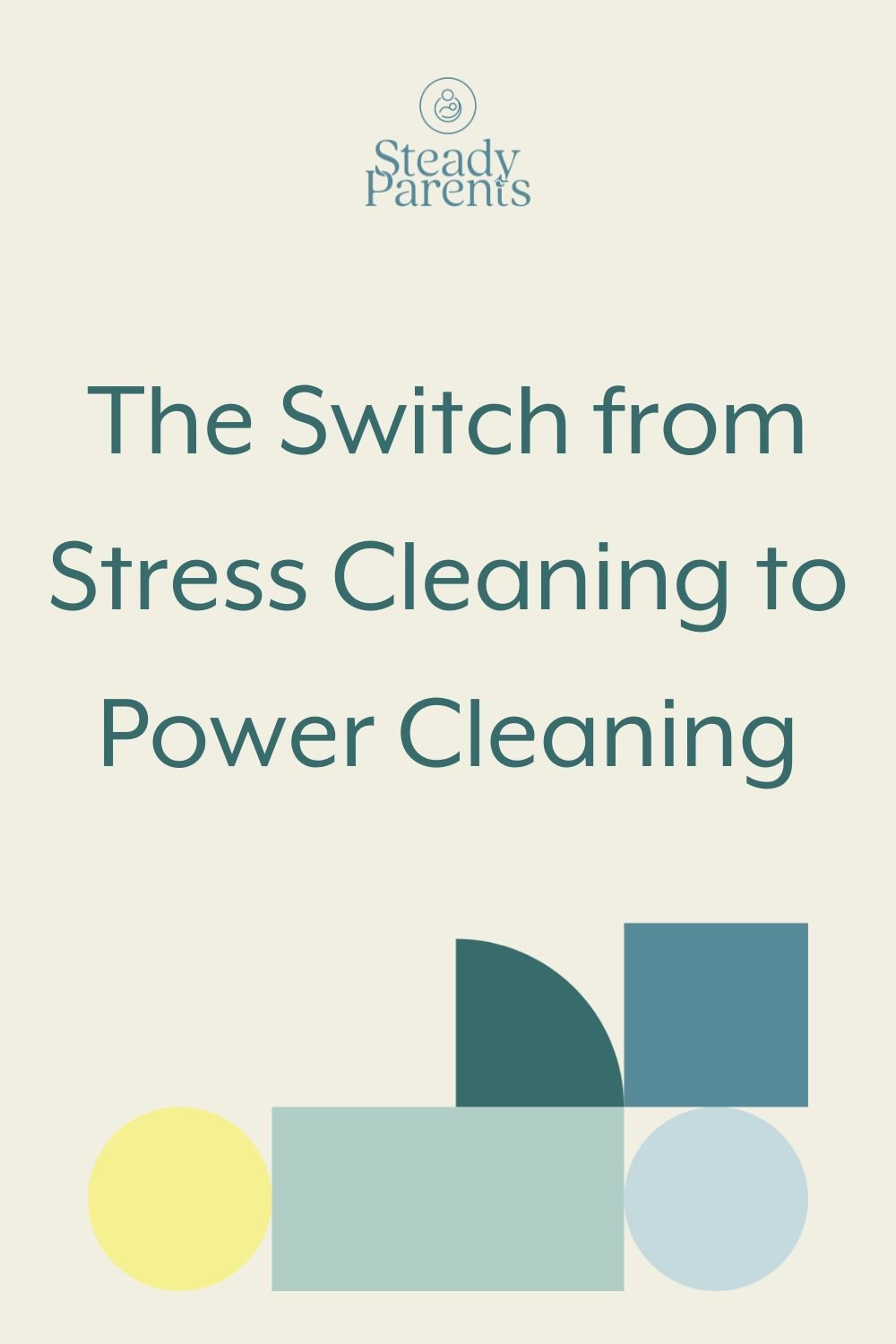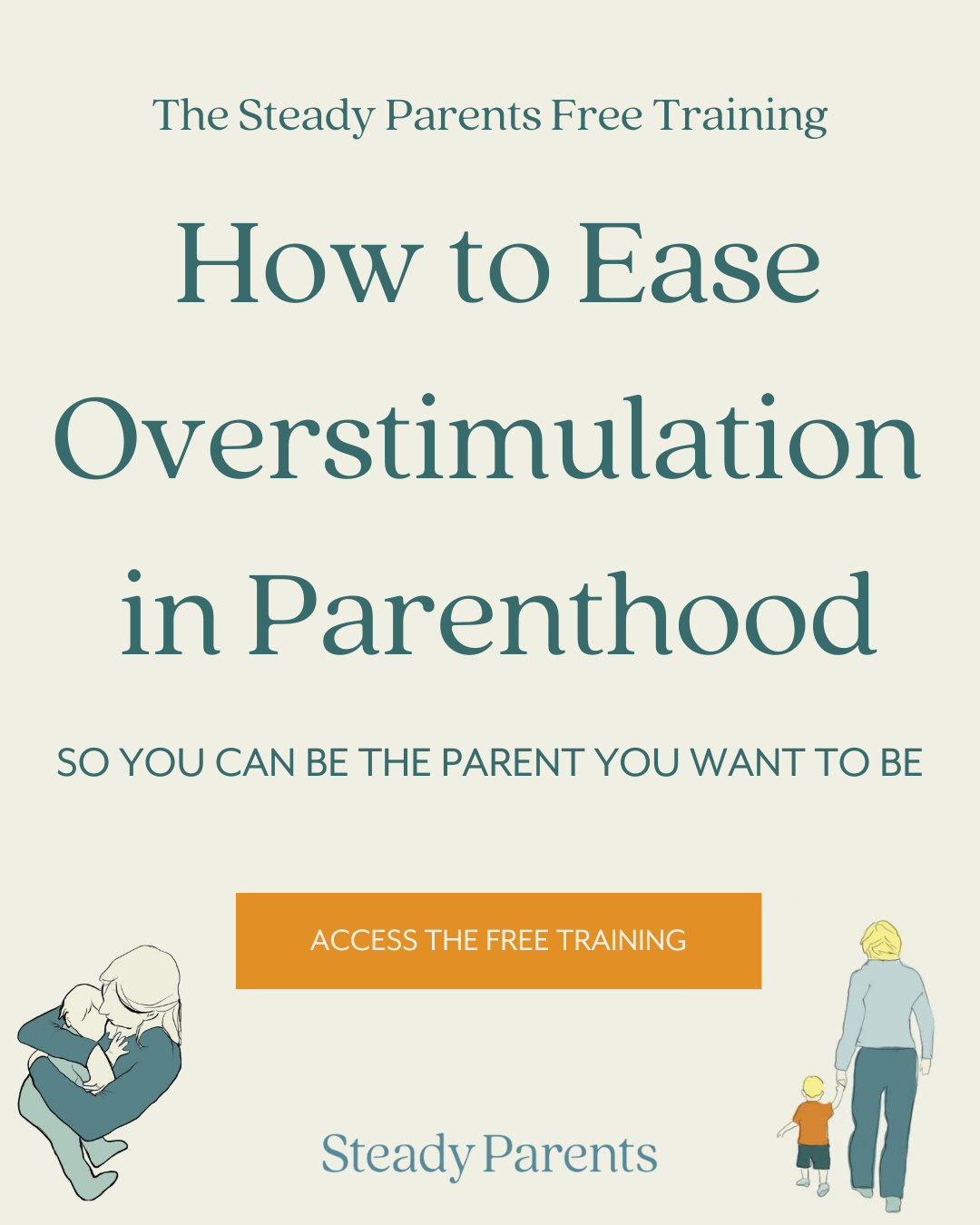The Rage Clean: The Overstimulated Mom’s Superpower
Ah, the rage clean. Also known as stress cleaning or anxiety cleaning. An adrenaline rush unlike any other.
As an overstimulated mom, a good rage clean can feel so dang good! But before I share a different strategy than adrenaline-filled tidying, let’s talk about clutter.
Why You Can’t Relax Until the House is Clean
Almost every sensory system that you have gets triggered by clutter, leading to sensory overload.
Your sense of touch can become overwhelmed from tripping or stepping on objects.
Your body may have to physically move around the clutter in space to get from point A to point B.
The visual overstimulation from just looking at the mess is intense.
That trash that needs to be taken out has a distinct smell that signals uncleanliness to your brain.
Your sensory system is your most foundational system, so if it’s working really, really hard, then other systems like executive functioning (thinking) won’t work as well. You can find more on executive functioning in this blog post.
It’s also really hard to control yourself when you’re feeling sensory overload from being in a cluttered space. You may yell or do something you’re not super proud of when your sensory system is overstimulated. (Hence the “rage” part of ‘rage clean”).
And, the more clutter there is, the more triggered your fight or flight response becomes.
Though some joke that rage cleaning is cheaper than therapy rage cleaners should beware!
Is Cleaning A Healthy Coping Mechanism?
All that that rage did for you was heighten your level of arousal, and now your nervous system is primed to fight.
Even more, the more frequently you enter the fight or flight mode, the quicker you are to enter into it the next time.
Plus you’ve perhaps exhausted yourself, and now you’re snapping at your kids because they’re playing with Play-Doh again, making yet another mess, and you’re tired.
I know that the rage clean feels good. It makes you feel accomplished. You fixed the problem, your house is clean!
But who remembers that total fear, shutdown, or that “nobody move!” feeling when your own parents started rage cleaning?
As much as we can, let’s model for our children another way to release that stress and clean the house.
The Switch from Stress Cleaning to Power Cleaning
I call it a power clean, not a rage clean. It’s powerful, it’s intentional, and it’s effective. But it’s not scary for everyone else in the house.
Here’s how it works:
Focus on one task. If you’re overwhelmed and can’t seem to focus anywhere, try cleaning off one surface. Maybe a table, maybe the counter, and then sit and focus there. It gives your brain some stability so it can focus on what it needs to!
Keeping it small and goal-directed helps you keep your home functional, but more importantly, it keeps you regulated.
You may even choose to set a timer for this, so you are forced to stay focused on this one area (see number 3).
Use batching to reduce mental strain. Batching is when you combine small, similar tasks and do them at once.
For example, only focus on clearing the dishes from around the house and bringing them to the sink. Or just clear out a space so you can walk safely. Or just pick up laundry and bring it to the laundry room.
Batching is effective because it reduces mental strain (you’re not constantly shifting from one goal to another) and you can check off items on your list sooner, making you feel more accomplished & motivated.
Try the “Time vs Task” strategy. Time vs Task is when you set the timer and say “I’m only going to work on this for ___ minutes” (could be 5, 15, 30, whatever feels reasonable to you). Then you work diligently for that long.
This gives you motivation because you know there’s an end to the work, and once you’re done, you can rest! It also ensures that you don’t overwork yourself, which can lead to frustration and fatigue.
Be mindful of what you’re doing, instead of letting your thoughts and emotions spiral. You can still go hard with a good playlist! Intentionally choose one task after another, and use your senses while you do it.
Remember, you don’t have to be the Pinterest mom who brings out all of the art supplies and sensory play set-ups. If the mess leaves you feeling completely depleted or you’re not enjoying your time with your kids in those moments, it’s okay to skip it! You can find other ways to play with your children in this blog post.
Tools for Visual Clutter Overwhelm
So next time you feel the rage coming on and you’re surrounded by clutter, stop, scan, and just pick one thing to clean. These OT tools are frequently used for energy conservation, and they apply here for managing clutter!
Having a small, accomplishable goal (just the trash, or just 15 minutes) helps keep you regulated so it doesn’t evolve into a full-blown rage clean.
The Sensing Your Needs in Parenthood online program will take you from feeling constantly overstimulated and dysregulated to feeling more balanced, present, and in control.
You’ll gain a deep understanding of the underlying causes of your sensory dysregulation and learn practical strategies to regulate your nervous system and prevent burnout. You’ll experience fewer and less intense dysregulated moments, more joy and connection in parenthood, and a greater sense of self-awareness and self-compassion.
By prioritizing your own sensory needs, you’ll be able to show up as the steady and loving caregiver you want to be for your children. (AKA not getting SO. DANG. TRIGGERED. when you step on a graham cracker.)
Pin This for Later:









